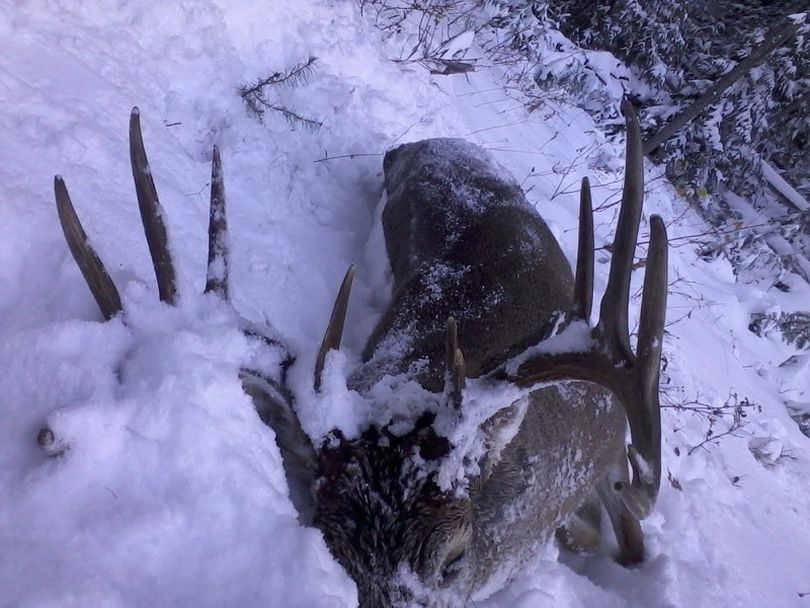Idaho discounting big-game hunting tags in August

HUNTING -- Resident and nonresident hunters can buy remaining nonresident big-game tags as second tags for discounted prices of $199 for deer and $350 for elk, Idaho Fish and Game Department officials announced last week.
The discount is being offered only during August.
In September, sale of nonresident tags used as second tags will increase to $300 and $415, excluding vendor fees.
Here are details from IFG:
- Any hunter who has purchased a hunting license and a 2015 deer or elk tag at the regular resident or nonresident prices can buy a discounted second tag for the same species.
- Tags are sold on a first come, first served basis and supplies are limited to the available nonresident tag quota.
- Tags are available at Fish and Game offices and license and tag vendors, online at fishandgame.idaho.gov, or by calling 1-800-554-8685.
Fish and Game sold discounted deer and elk tags last year as an incentive for hunters to buy the remaining quota of nonresident tags, but commissioners decided this year to limit the discount sale to August.
The nonresident quota is 12,815 elk tags and 15,500 deer tags, and since 2008, a portion of the nonresident quota has gone unsold.
But Fish and Game has seen increased tag sales due in part to improved deer and elk hunting in Idaho and a better economy, write IFG spokesman Roger Phillips. Through July, sale of nonresident elk tags is up 25 percent over the same period last year, and up 14 percent for deer tags, he said.
Fish and Game is forecasting better deer and elk hunting this year because of mild winters and excellent survival of deer and elk.
Nonresident tag quotas are factored into projected harvest rates, so Fish and Game officials don’t expect increased sales, either as nonresident tags or second tags, will lead to overharvesting of deer or elk, Phillips said.
Last year, hunters using second tags accounted for 2.5 percent of the statewide elk harvest and 3 percent of the statewide deer harvest.
While this is the second year of discounted nonresident tags sold as second tags, the program is not new. Nonresident deer and elk tags have been sold as second tags since 2000.
